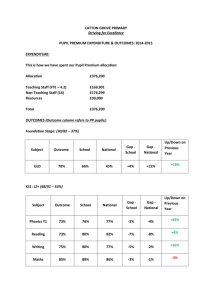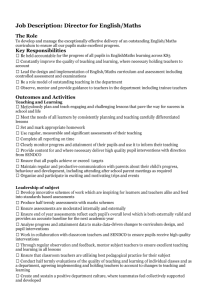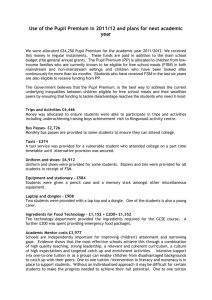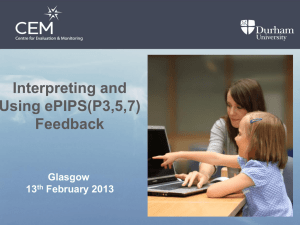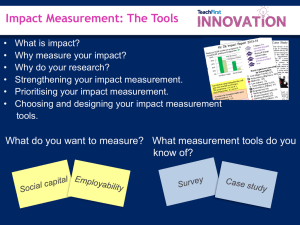Samuel Barlow Primary School Pupil Premium allocation 2012/13
advertisement
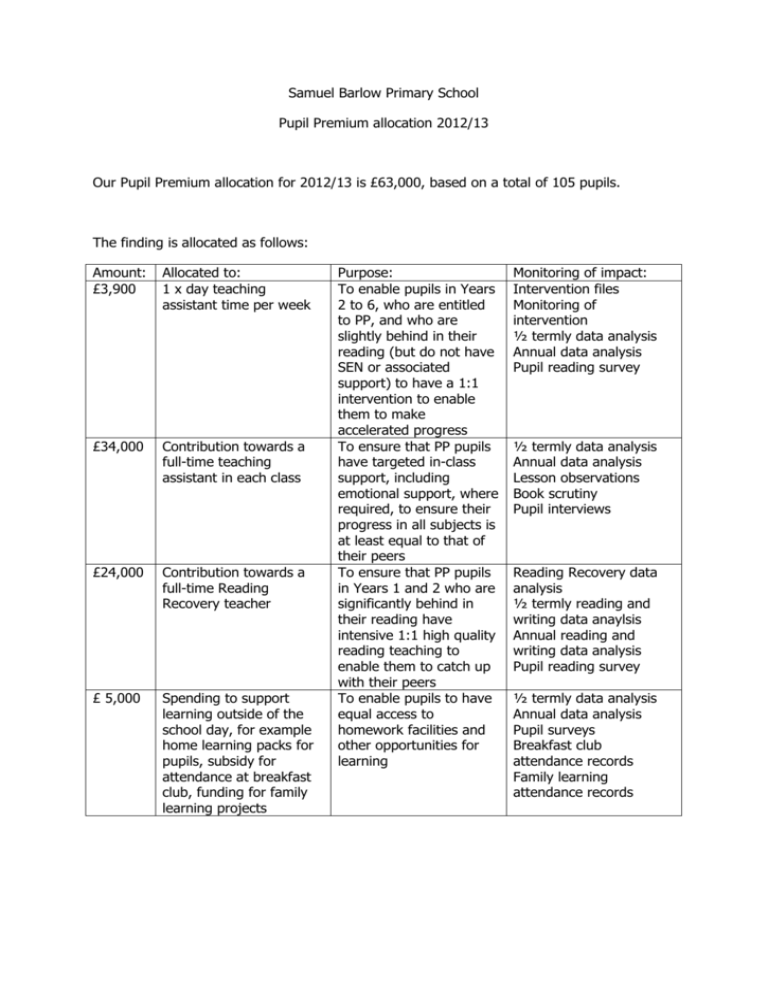
Samuel Barlow Primary School Pupil Premium allocation 2012/13 Our Pupil Premium allocation for 2012/13 is £63,000, based on a total of 105 pupils. The finding is allocated as follows: Amount: £3,900 Allocated to: 1 x day teaching assistant time per week £34,000 Contribution towards a full-time teaching assistant in each class £24,000 Contribution towards a full-time Reading Recovery teacher £ 5,000 Spending to support learning outside of the school day, for example home learning packs for pupils, subsidy for attendance at breakfast club, funding for family learning projects Purpose: To enable pupils in Years 2 to 6, who are entitled to PP, and who are slightly behind in their reading (but do not have SEN or associated support) to have a 1:1 intervention to enable them to make accelerated progress To ensure that PP pupils have targeted in-class support, including emotional support, where required, to ensure their progress in all subjects is at least equal to that of their peers To ensure that PP pupils in Years 1 and 2 who are significantly behind in their reading have intensive 1:1 high quality reading teaching to enable them to catch up with their peers To enable pupils to have equal access to homework facilities and other opportunities for learning Monitoring of impact: Intervention files Monitoring of intervention ½ termly data analysis Annual data analysis Pupil reading survey ½ termly data analysis Annual data analysis Lesson observations Book scrutiny Pupil interviews Reading Recovery data analysis ½ termly reading and writing data anaylsis Annual reading and writing data analysis Pupil reading survey ½ termly data analysis Annual data analysis Pupil surveys Breakfast club attendance records Family learning attendance records Actual impact: The following groups of Pupil Premium pupils made better progress in the core areas identified than those not entitled to PP: Year 1 reading, writing and maths; Year 2 writing and maths; Year 3 maths; Year 5 reading and maths. PP pupils in Year 5 made equal progress to those not entitled to PP The following groups of pupils made at least good progress in the core areas identified: Year 1 reading and maths, Year 2 reading and maths, Year 3 reading, writing and maths, Year 5 reading, writing and maths, and Year 6 reading, writing and maths In end the of KS2 tests, 75% of the pupils eligible for FSM achieved a level 4 in reading , writing and maths, compared to 82.4% of those not eligible. The FSM gap is therefore 7.4% which is lower than Nottinghamshire’s FSM gap. In the end of KS2 tests, the percentage of PP girls achieving Level 4+ in maths was greater than that of non-PP pupils, and the percentage of PP girls achieving Level 4+in reading, writing and maths was greater than that of those not entitled. In the end of KS1 assessments, the percentage of pupils entitled to FSM achieving Level 2+ was greater than that of those not entitled for all of the following groups and areas: speaking and listening (boys and girls), reading (boys, girls and all pupils), writing (boys, girls and all pupils), maths (boys and girls) and science (boys, girls and all pupils) In the end of KS1 assessments, the percentage of PP boys achieving Level 2b+ in reading was greater than that of those not entitled to PP. 25% of girls entitled to PP achieved a Level 3 in reading compared to 0% of those not entitled. The percentage of PP girls achieving Level 2b+ in writing was greater than that of non-PP pupils, and in maths, boys, girls and all pupils outperformed non-PP pupils at both Level 2b+ and Level 3.
